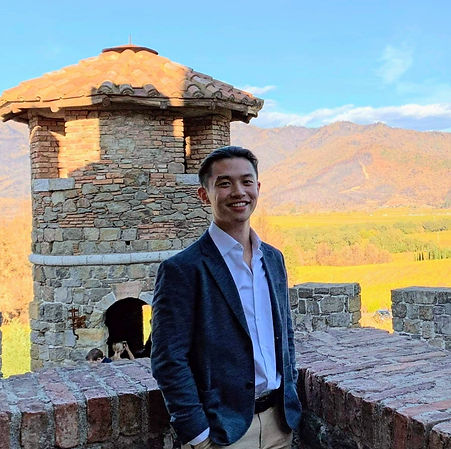
Hi, I'm James ManG
I am a fifth-year Astronomy graduate student and NSF Graduate Research Fellow at the University of Texas at Austin working with Prof. Caroline Morley. I'm interested in the characterization of exoplanet atmospheres to deepen our understanding of these distant worlds.
If you are interested in my work, please take a look at my CV or contact me!
ABOUT ME
I study the atmospheres of ultra-cool brown dwarfs and temperate giant exoplanets. Especially now in this new era of high-resolution JWST observations, we can determine the chemical composition, cloud behaviour, and atmospheric dynamics of these cold extrasolar worlds like WISE 0855.
My research focuses on the microphysics behind cloud formation in the coldest substellar objects and how these clouds affect the spectra we observe from JWST. I am broadly interested in the atmospheric characterization of cold dynamical benchmark systems that JWST is enabling us to directly image now like Eps Indi Ab, Eps Eri b, and 14 Her c. Systems like these are key to our understanding of the diversity of temperate giant planet atmospheres.
I also work on developing PICASO, an open-source Python package that can compute climate models and spectra. I use PICASO to generate grids of atmospheric and evolutionary models, which take into account different chemical compositions, dynamics, and cloud compositions. I apply these models to interpret spectra from JWST (see my CV for information about these programs) and prepare for upcoming capabilities with the Nancy Grace Roman Space Telescope and the Extremely Large Telescopes (ELTs), aiming to constrain fundamental properties of these objects.

My research
Understanding Cloud Microphysics
Water clouds are expected to form in cool brown dwarfs and giant planets with Teff < 450 K. Cloud distributions are controlled by microphysical processes such as nucleation and condensation, which hasn’t been considered in detail for water clouds in H/He atmospheres. In the first paper, I investigate the impact of including microphysical water clouds in the atmosphere. In the second paper, I provide recommendations for the best practices to include water clouds in these atmospheres when using parameterized cloud models. Our results are the first step towards constraining water clouds' impact on cooler worlds to inform observations by JWST.
Modeling Brown Dwarf Atmsopheres
To accurately interpret the exquisite details JWST observations show of these ultra-cool substellar objects, we require a new set of atmospheric and evolutionary models. I am developing the fifth iteration of Sonora models, an expansion upon the existing suite to encompass much colder temperatures, cloudy atmospheres, and chemical disequilibrium across a broad range of metallicities, and C/O ratios, reaching values similar to those observed in Jupiter and Saturn. These atmosphere models will be included as boundary conditions for the first substellar evolution models that include volatile clouds in addition to more refractory clouds at higher temperatures.

Using JWST to Study Ultra-Cool Substellar Worlds
I use the models that I generate to characterize different substellar objects. Particularly, we have our favourite brown dwarf, WISE 0855. It's the coldest known brown dwarf and should have water clouds present in its atmosphere without other cloud decks above it. The JWST program we are working on, studies WISE 0855 for 11 hours looking at the variability of this object that can be due to chemical dynamics and/or water clouds. Stay tuned for our results!